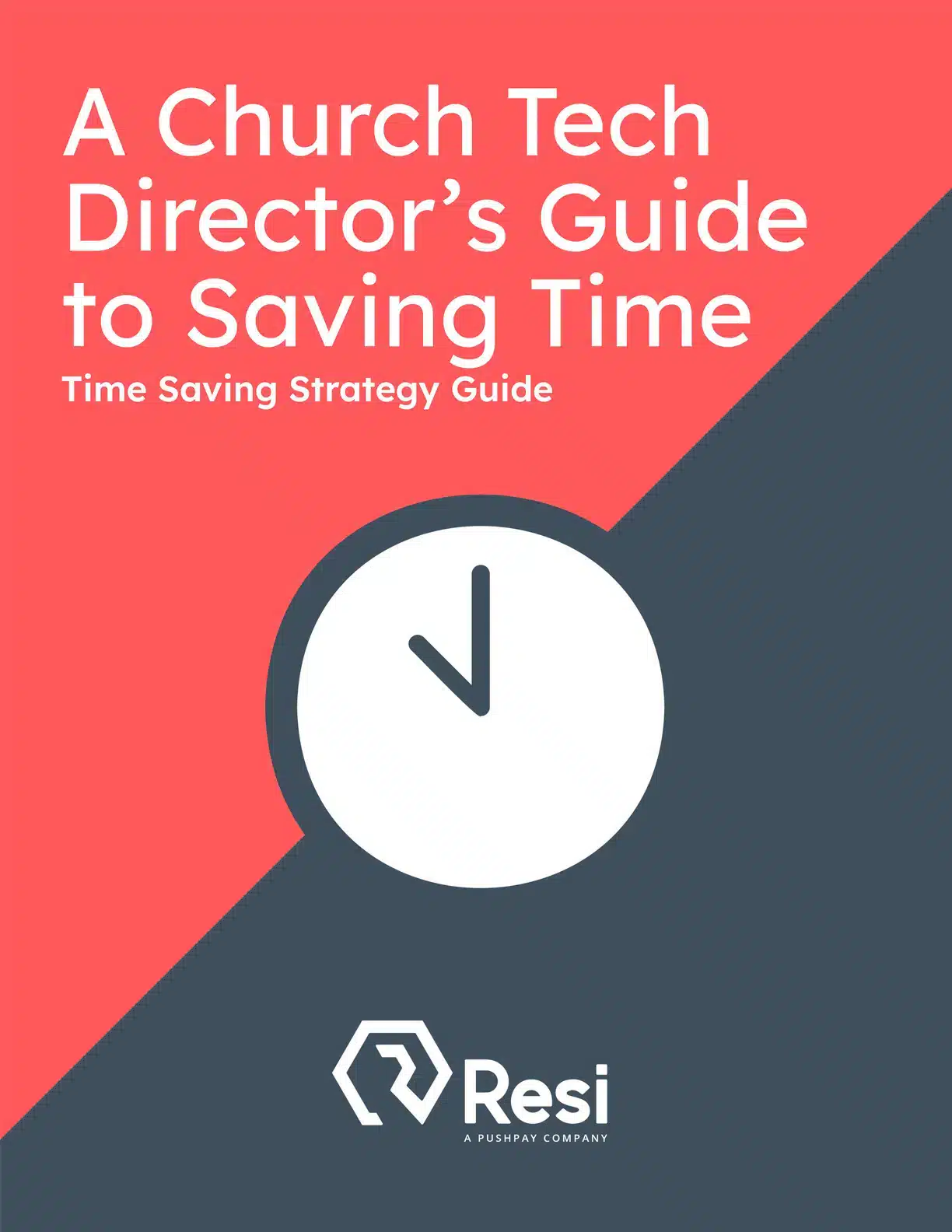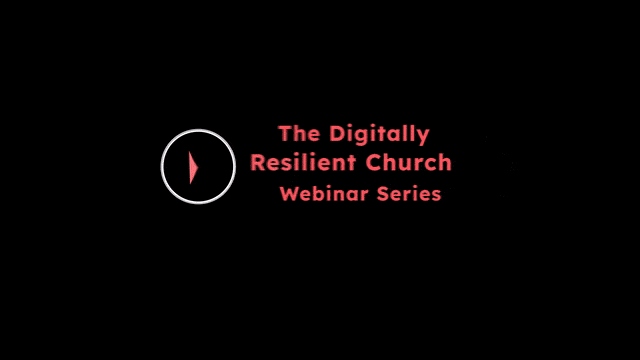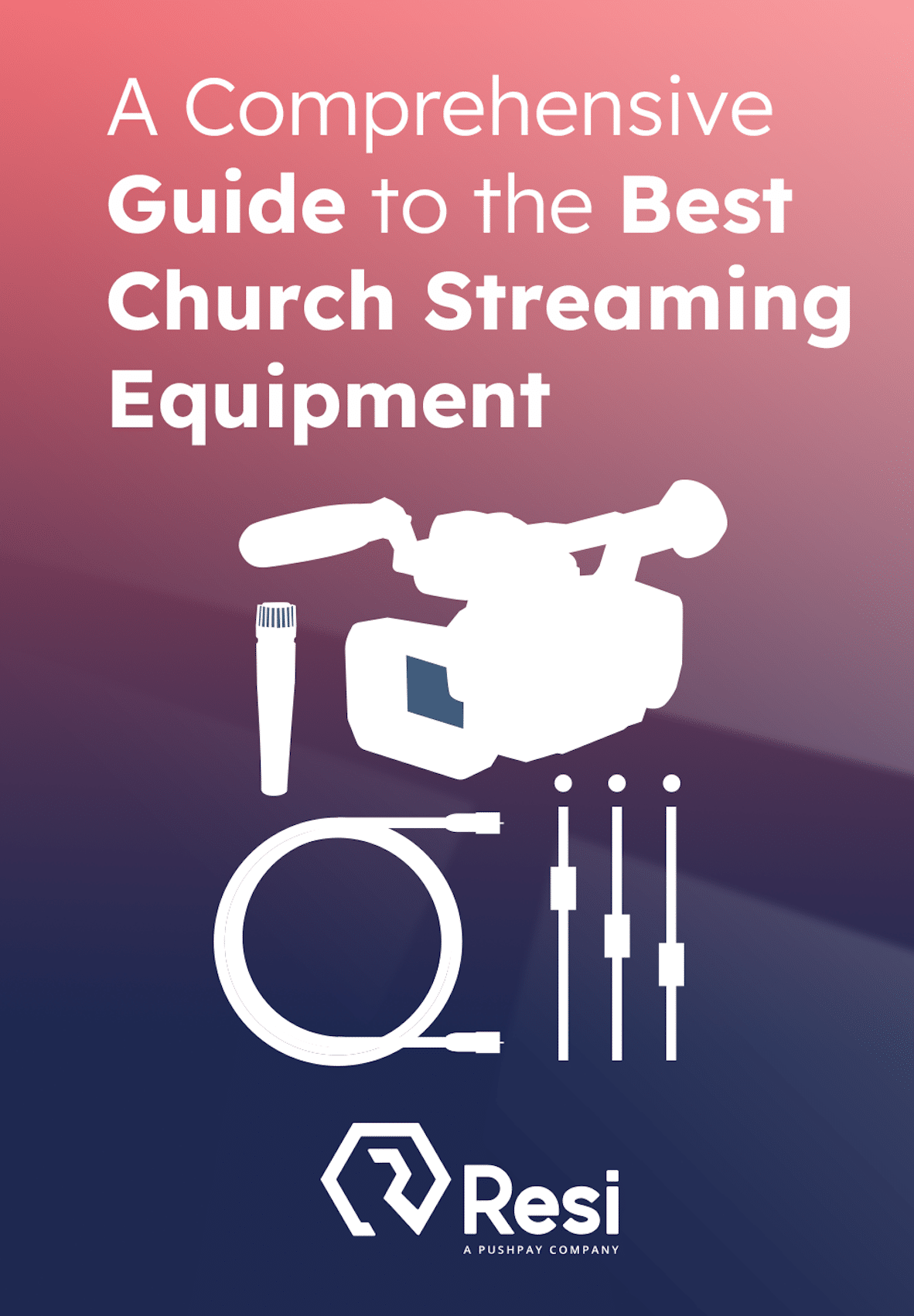
As churches around the world plan for Easter, we know many are looking for new and innovative ways to engage with their visitors. Today, we’re excited to share a guest blog post from our friend Jeff Reed, founder of THECHURCH.DIGITAL. This post is one you’ll want to read before the holiday explosion, as Reed explores different digital methods that help you connect and follow up with your audience—both in-person and online.
Taking Back Monday: A Church Tech Director’s Guide to Saving Time
With this resource, you can take back time on Mondays and focus on what matters most—serving your ministry.
Download for free!
Easter Preparation!
We’re heading into the final days of Easter prep, when we’re making sure we have a solid “phygital” (physical + digital) service for the holiday. But as great as we want our physical and digital experiences to be, if we don’t have a solid strategy for bringing first-time or sporadic guests back, then there’s not really much point to what we’re doing. Follow-ups are so crucial for churches in physical and digital spaces, but finding a way to connect with people digitally can feel unfamiliar and overwhelming.
One of the hardest parts of digital church is figuring out who these people are who are watching your services online. One church reported to me that in Easter 2020, they had close to half a million viewers during their online service. When I asked how many connection cards they received from this huge crowd, their response was not nearly as impressive…11 connection cards.
Connection cards, unfortunately, often ask questions people find too invasive, or the cards get lost in the shuffle of your service. And if you don’t have any information for a follow up, then you’ve missed an incredible opportunity to connect and engage with people during their holiday service. But are there better ways to build relationships with people, other than through a connection card? We’ve got five!
Five Options Better than the Connection Card.
Texting
There are so many church-friendly texting services these days that allow you to collect contact information quickly and easily. Even ChMS databases are building this feature in. This is a great way to get bare-bones information from digital attendees—but don’t try to collect too much information here. Keep it simple.
Facebook Groups
Rather than collecting information like cell phone numbers and email addresses, your church can ask visitors to join a Facebook Group. Working through platforms like Facebook and Instagram are much easier to connect with new people, and they offer a familiar platform to deepen your relationships through.
Messenger Apps
Anyone who likes, comments, or shares your church content online offers you an opportunity to reach out to them via platform messenger apps.
In fact, churches are reporting as high as an 80% response rate on “cold/lukewarm calls” via Facebook and Instagram messenger.
Offer Events and Classes
Make your connection cards a tool where visitors can sign up for a Next Step Event/Class. This method ensures that whoever is filling out the card plans on returning again, giving you the ability to meet and interact in a more personal space.
Equip Sign-Ups with Spiritual Resources
Create content that acts as a spiritual resource for people who fill out a connection card. This content may include concepts that sermons haven’t touched on yet, offer answers to spiritual questions, or even supply visitors with outside resources that can help them along their spiritual journey. By creating a digital library of content that can be accessed when people sign up, visitors will feel more connected to your church’s mission and feel a stronger sense of belonging. Plus, if your content ends up providing a lot of value, people will be more likely to share it with others, broadening your church’s reach even further.
Bonus: Call-to-Action Buttons
What could be better than engaging with your viewers directly from your livestream? With the Resi player’s CTA Button, you can guide your online audience to any URL of your choosing, including email capture forms, sign-up forms, and more. Once activated, CTA buttons will appear on every video that plays from your broadcast which will guarantee that you never miss the chance to follow-up with an online visitor again. Plus, with the craziness Easter Sunday often brings, having the ability to set up a CTA Button in advance so you can focus on your physical service helps create a foolproof “phygital” environment that both digital and in-person visitors can enjoy.
Conclusion
Some of these methods will require some preparation before you can fully execute them, however, others you can probably get started before Easter 2023. Either way, the combination between physical and digital strategy is here to stay and we’re excited to see how you implement these methods while celebrating this Spring.
About Jeff Reed
In June 2000, Jeff led his first Online Bible Study using a text based system called Ultimate BB. Since then, Jeff has focused his energy on serving ministry through digital initiatives by working on church staffs, as well as running businesses that complement the mission of the Church. Ultimately, he developed a passion for helping churches expand their ministry through digital platforms, further embracing the idea of “Phygital Church and Digital-Only”—a concept involving location-Independent expressions of church.
In April 2018, Jeff founded THECHURCH.DIGITAL with a calling to help churches better understand the strengths of digital tools. In January 2020, Jeff took a position with Stadia Church Planting as their Director of Digital Church Planting.






